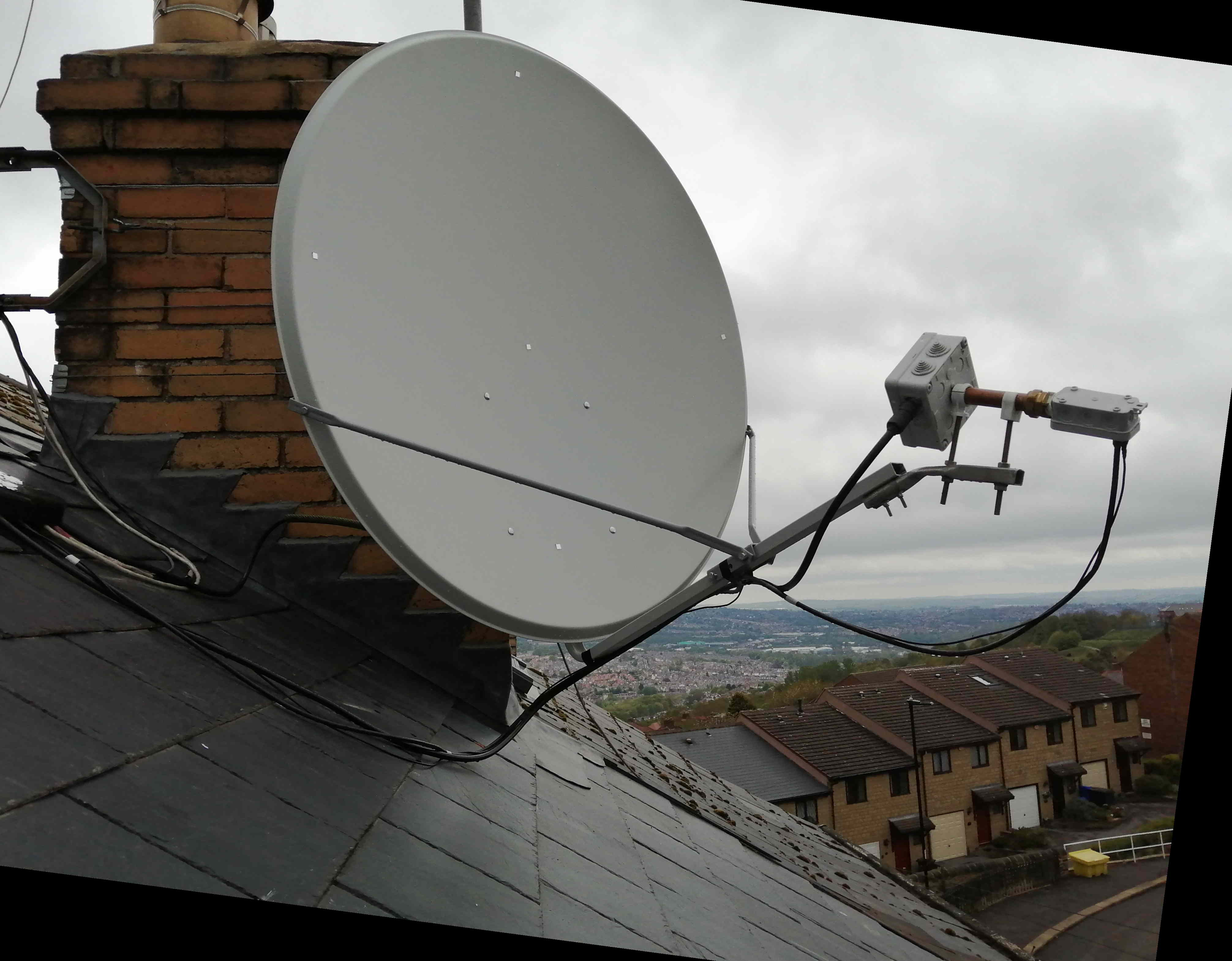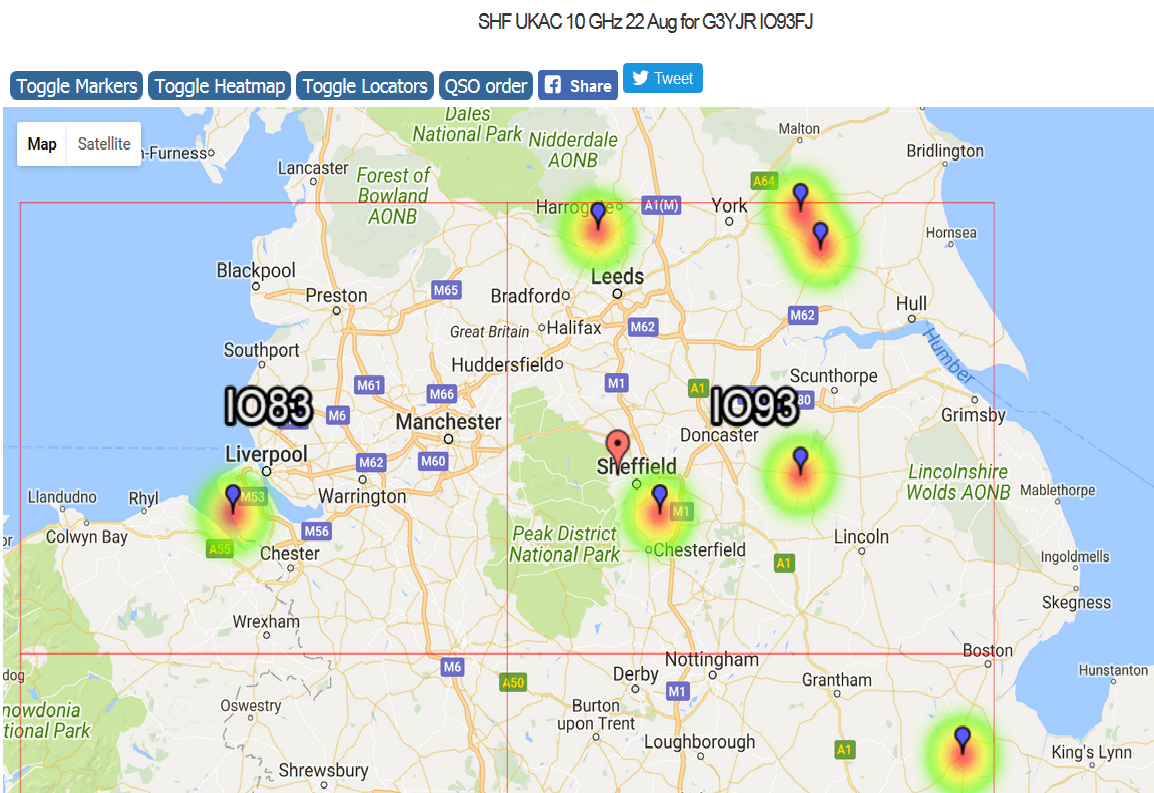Last year I experimented with using a 13cm band yagi for the up-link and an LNB strapped alongside my horn on the dish I use for terrestrial work for the down-link.
I’ve now put a dish up for the Qataris’ Es’Hail-2 satellite. It is a 1.1m off-set PrimeSat dish.
Prior to putting it up, I had bodged a bit of aluminium box tube to take the dual-band feed. I checked the dish’s focus with a few stick-on mirrors and the sun as an light source. There did seem to be a bit of distortion in the dish, though it looked in excellent condition, with no visible damage. I may be able to squeeze out this distortion using the braces for the LNB arm.
Bearing in mind how windy it gets here I’ve used belt and braces in mounting the dish. I decided not to get the larger 1.3m dish. I felt the 1.1m dish would be easier to manoeuvre up to the roof and also it would be less affected by wind. I’ve used two steel chimney lashings to hold two brackets. I decided the usual aluminium pole might not be up to the job, so I set a section of steel scaffold pole in the brackets. The dish’s two clamps are fixed to the bottom of the pole. In case of the dish clamps somehow working free, there is a third clamp at the bottom of the pole to stop the dish dropping off.
I’ve fitted braces to the LNB arm to hold the arm steady in the wind.
Being low down on the chimney and on the easterly side of the house, the dish is in the lee of the strong westerlies and south-westerlies.

The 13cm patch antenna in the bigger plastic box is not really working as circularly polarised. It is more like linear, effectively from a dipole, but the return loss is quite good. The patch is fed with a shortish length of Ecoflex 10.
The LNB has a bit of “satellite” coax taking the signal back into the station. I found the connectors on my thin “WiFi” coax were very poorly fitted. I use this to carry the 27 MHz reference oscillator signal to the LNB. I soldered a proper SMA connector on the LNB end of the cable. An LNB lens takes the signal from the dish which is then piped along a short length of copper waveguide (22mm domestic copper pipe) into the LNB. The waveguide is held by pipe clips mounted on short lengths of stainless steel studding. The LNB has a bit of a twist on it in an attempt to optimise the match to the polarisation from the satellite.
I sealed all the connections with self-amalgamating tape.
See Dual Band Feed construction.
Note: I had originally mounted the N-type socket for the patch feed with the socket mounting flange inside the plastic box, but this meant the N-plug did not mate reliably, so I re-mounted the socket on the outside of the box.






